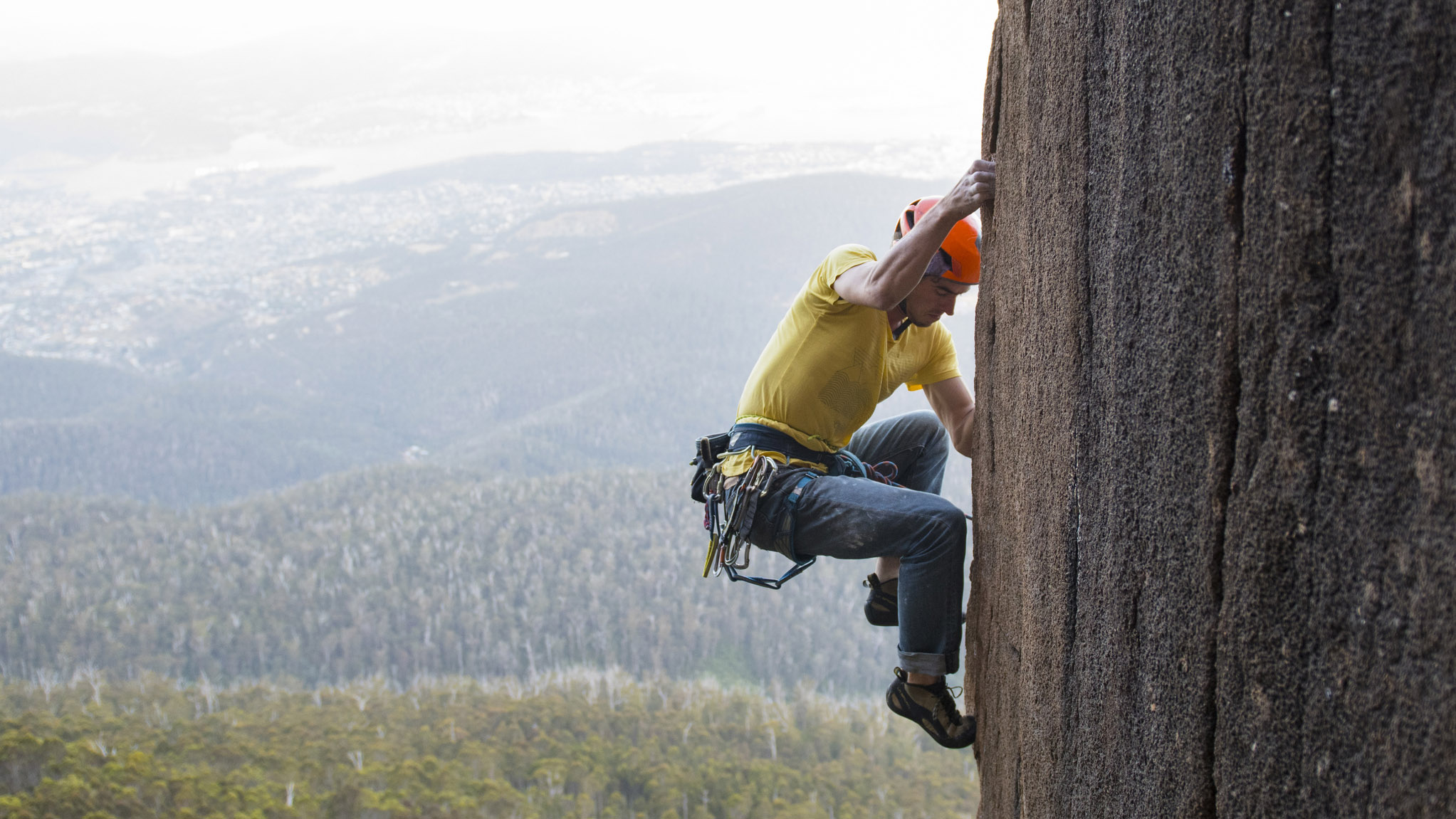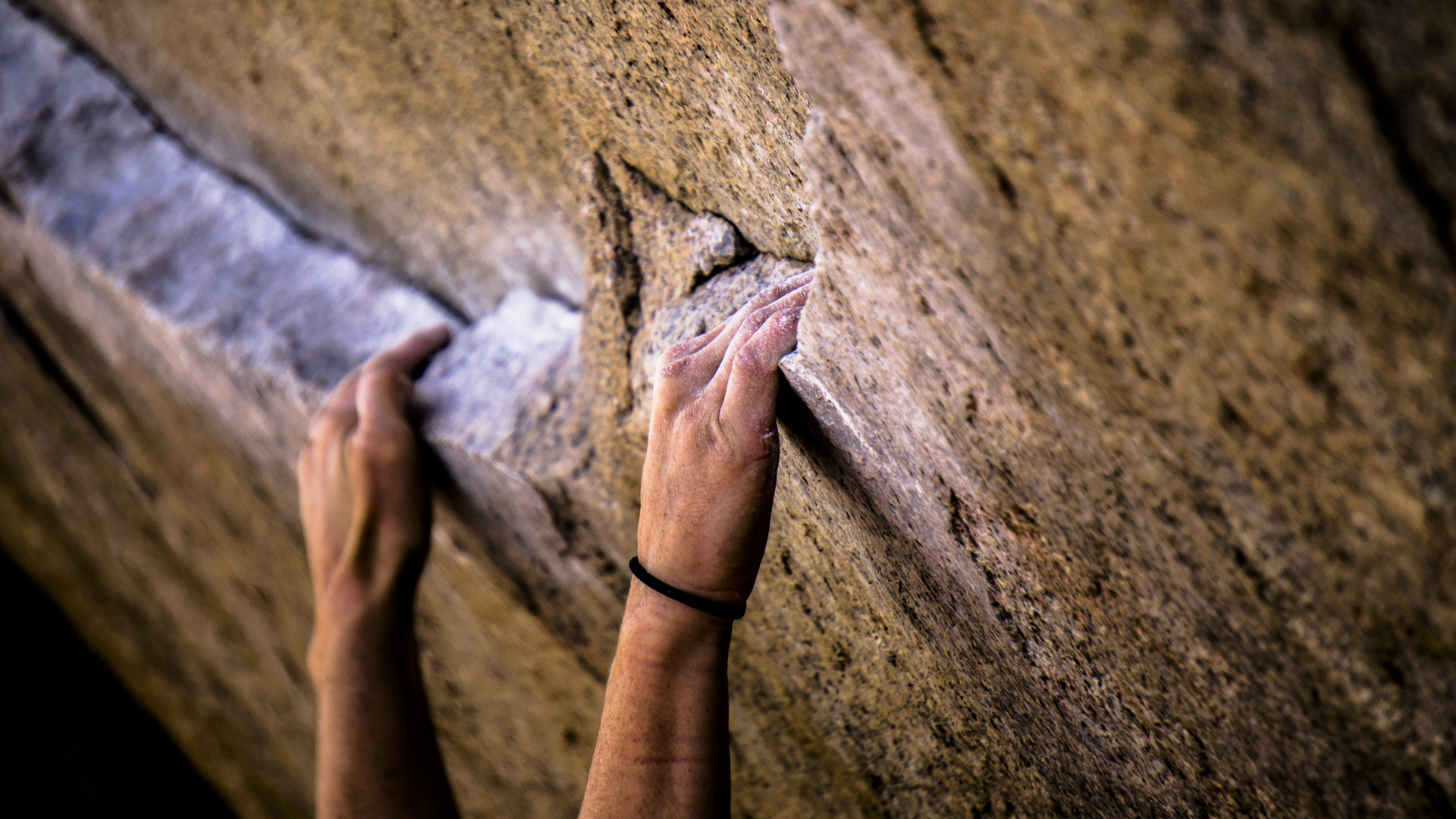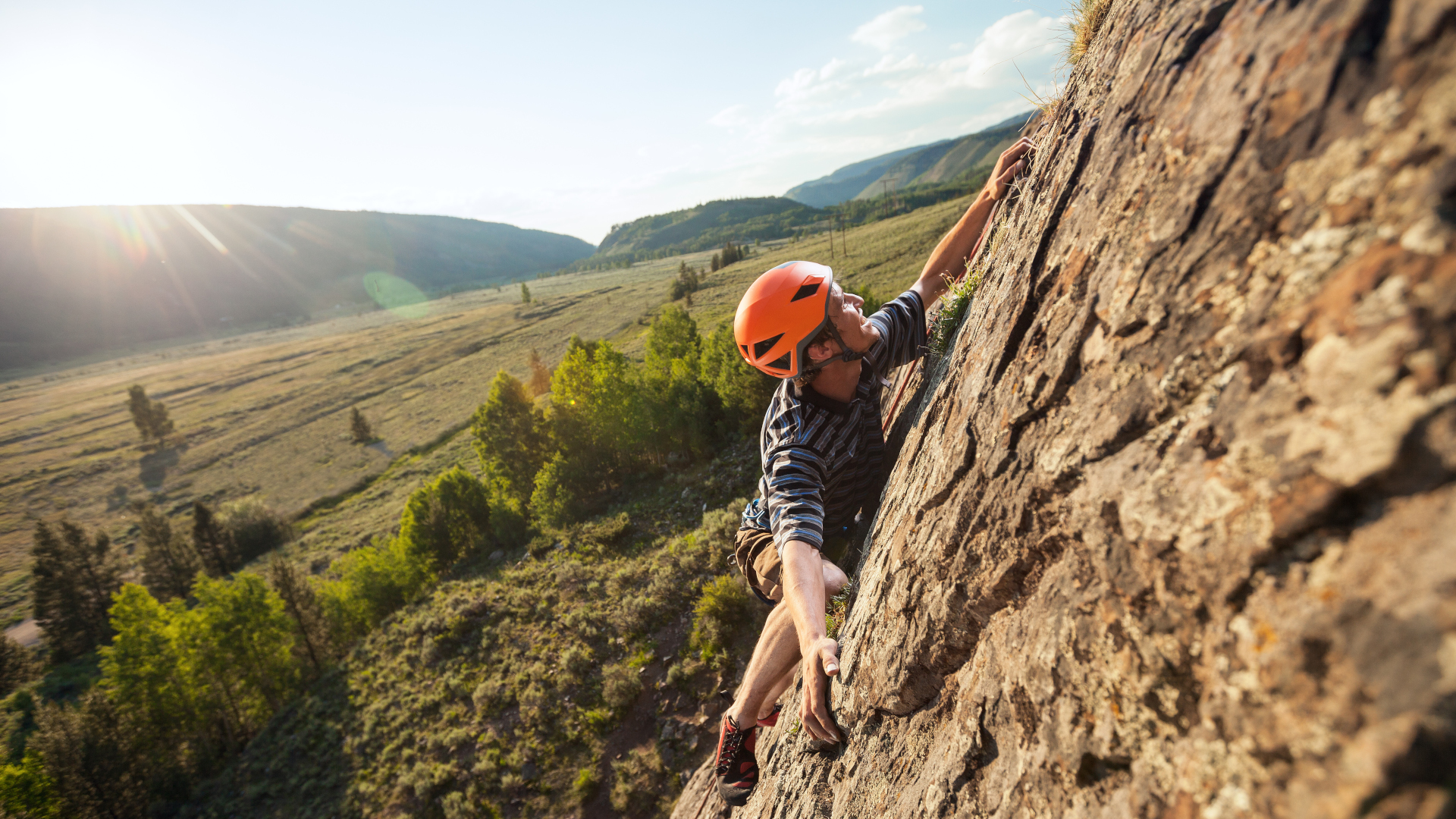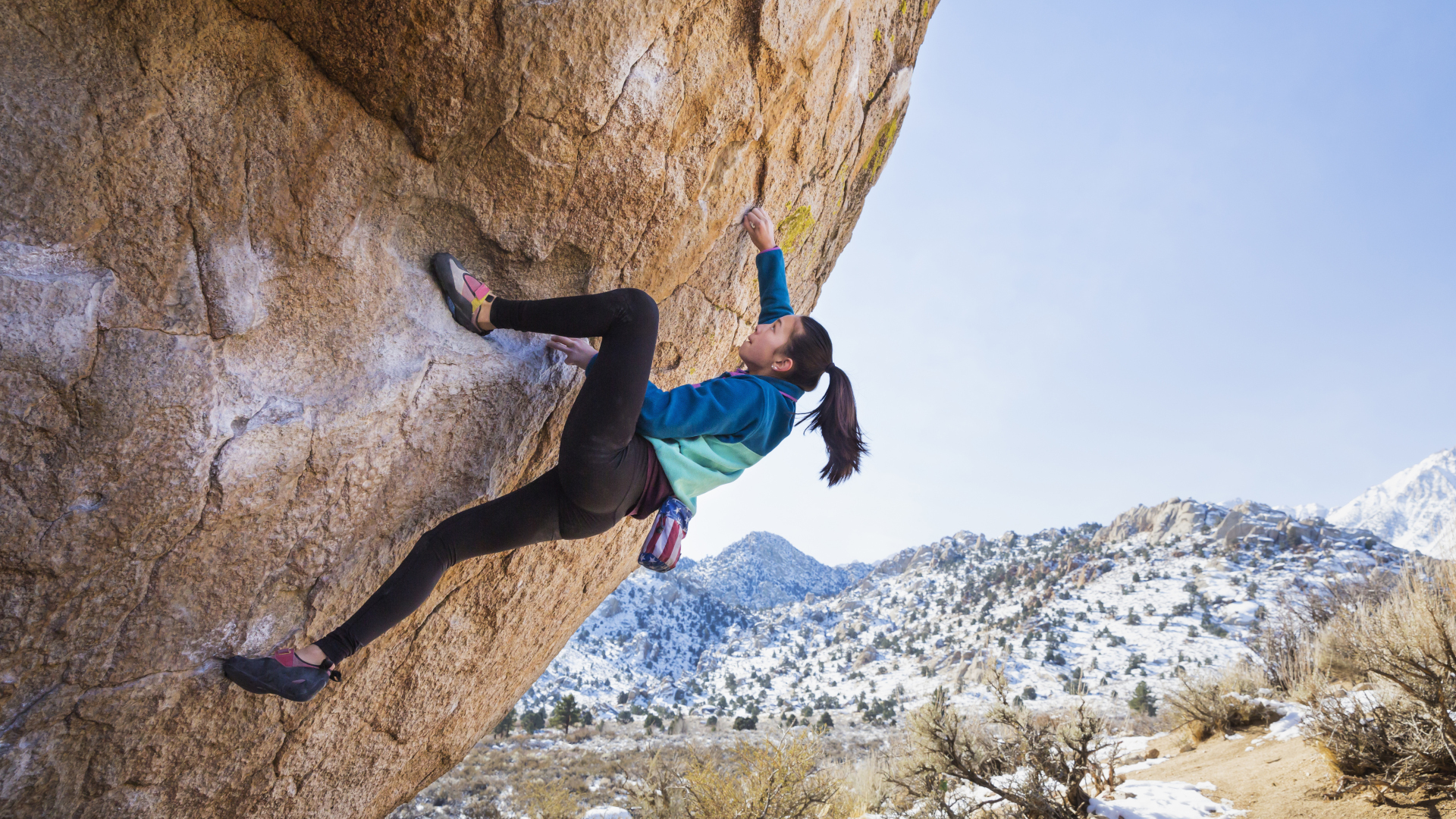6 common climbing injuries and how to avoid them
Climbing is a risky sport – we discuss six of the most common climbing injuries you might incur at the crag, and how to avoid them.

Part of what makes climbing so fun is how risky it is. Falling isn’t fun, but if you knew you were going to land every move, it would get a little boring each time. Not knowing if your climbing shoe is grippy enough to stay on that tiny ledge while you push yourself up to grab that jug lends a lot of excitement. But that excitement can come with a price.
Like any sport, rock climbing can increase your risk of injuries, and truly, the only way to avoid climbing injuries altogether is to stop climbing. If you’re not willing to do that, however, it’s helpful to understand where you might be at greatest risk, and how to prevent injuries where you can. In this article, we discuss six of the most common climbing injuries (not including abrasions and blisters from your shoes, which you can deal with using a little climbing tape), and how to avoid them.

1. Finger pulley injury
According to a 2018 Norwegian study on self-reported chronic climbing injuries, fingers were by far the most common site of injury, and pulley tears are a common finger injury that is pretty common to climbing, though very unusual in other activities.
Pulley is the name given to the connective tissue between your finger tendons and bones, and you have five in each finger. Perhaps needless to say, these pulleys get put under a fair amount of stress in climbing, especially when you’re using just one or two fingers inserted into a pocket or on a crimp to support most of your body weight.
A pulley injury can range from a mild strain to a total rupture, requiring surgery. When you tear a pulley climbing, you may hear a pop.
To avoid pulley injuries, you could stick to bigger holds and slopers, but of course that might not jive with your climbing ambitions. Even the pros can’t necessarily avoid them (Molly Thompson-Smith required surgery after tearing pulleys in three fingers) but you can reduce your risk by gradually building up your strength at the climbing wall, while hangboarding might be an effective way to improve your finger strength.

2. Head injuries
A 2022 study conducted at University Hospital Bern found that head injuries accounted for over 42 percent of injuries requiring a visit to the emergency department and over 55 percent of injuries sustained through rock and ice fall.
Advnture Newsletter
All the latest inspiration, tips and guides to help you plan your next Advnture!
If you’re climbing outdoors, rockfall is a serious hazard both when you're climbing and when you’re on belay. Again, it’s not one that you can easily avoid, but it’s absolutely vital that you wear a helmet at all times to help minimize the damage.
3. Tendonitis
Back in 1999, when the World Climbing Championships were held in Birmingham, researchers took the opportunity to survey climbers and spectators on their injuries, and found that 44 percent had sustained overuse injuries such as tendonitis, with 19 percent experiencing overuse injuries at more than one site.
Tendonitis and overuse injuries in climbers are particularly common in fingers, wrists, elbows (biceps tendon) and shoulders and result in stiffness in pain at the joint, which can be a setback for any sport. The key to avoiding tendonitis is to avoid overtraining – take rest days, build up slowly and cross train.

4. Rotator cuff injury
Your rotator cuff is a group of muscles and tendons surrounding your shoulder joint, so it should come as no surprise that injuries here are common amongst people who swing around by their arms all day.
A 2022 study by the University of Zurich compared 31 climbers with 31 non-climbers and found that the incidence of rotator cuff injuries in climbers was higher, at 68 percent, than in the regular public. Rotator cuff injuries can range from mild sprains to total tears and may require surgery.
Climbers can sustain rotator cuff tears in falls and awkward moves, but damage can also occur over time through progressive wear and tear and the risks become higher as we age. Obviously, falls can happen at any time when you’re climbing, but shoulder mobility is implicated in reducing your risk, according to the Mayo Clinic, so both working with a trainer to improve your shoulder mobility through exercises such as yoga and resistance band training as well as warming up thoroughly with dynamic stretching before you climb are both recommended.
5. Shoulder dislocation
Another common shoulder injury for climbers is shoulder dislocation, where the head of your humerus bone pops out of the socket, as well as shoulder subluxation, which is a partial dislocation.
Shoulder dislocations are common when you’re reaching your arms wide (spanning) or up overhead and overextending your shoulder joint. It can require a few weeks of rest, but it also leaves you more susceptible to future dislocations and rotator cuff damage.
Though these can also be the result of falls, keeping your shoulders both mobile and strong can help present dislocations, so make sure to include resistance training to stabilize your shoulder joints.

6. Ankle sprains
A sprained ankle might seem like something that only affects hikers and runners, not climbers, but the Berne researchers also found that ankle injuries account for nine percent of climbing injuries and if you’ve watched the movie Free Solo, you might recall Alex Honnold’s attempt on El Capitan was delayed by a sprained ankle after he fell a very short distance while being belayed.
Ankle sprains most often occur when climbers are just a few feet off the ground and slip, landing with their foot at an odd angle. As such, they tend to affect people when they’re bouldering, since that sport requires climbing without safety gear, or when they’re trad climbing and fall when they haven’t yet placed their first piece of gear.
To avoid ankle injuries and sprains, place your first Cam as soon as possible and make sure your partner has all slack rope pulled in. When you’re bouldering, make sure you know how to fall and try to land squarely on your feet, or on your back.
Julia Clarke is a staff writer for Advnture.com and the author of the book Restorative Yoga for Beginners. She loves to explore mountains on foot, bike, skis and belay and then recover on the the yoga mat. Julia graduated with a degree in journalism in 2004 and spent eight years working as a radio presenter in Kansas City, Vermont, Boston and New York City before discovering the joys of the Rocky Mountains. She then detoured west to Colorado and enjoyed 11 years teaching yoga in Vail before returning to her hometown of Glasgow, Scotland in 2020 to focus on family and writing.

